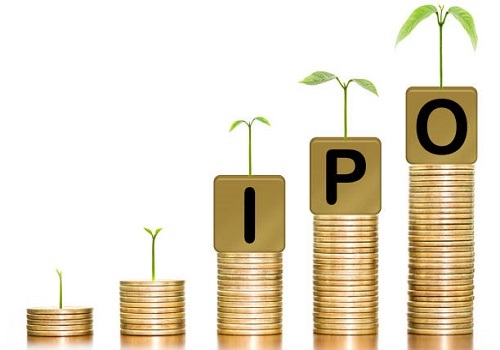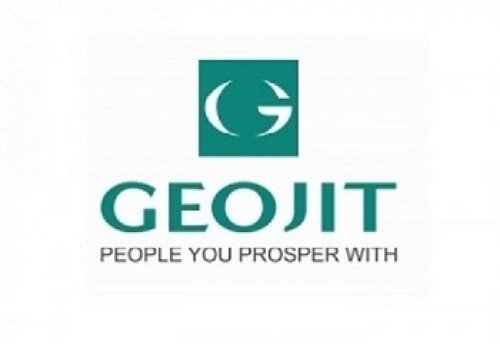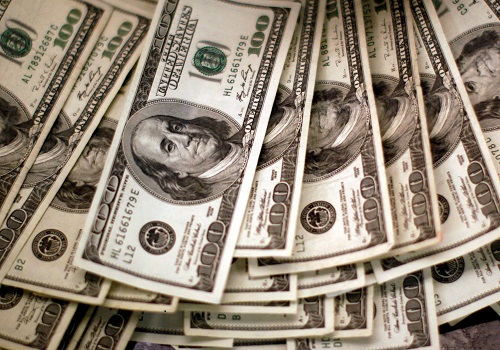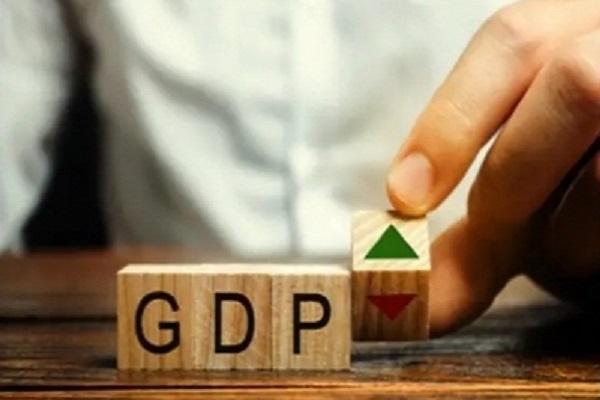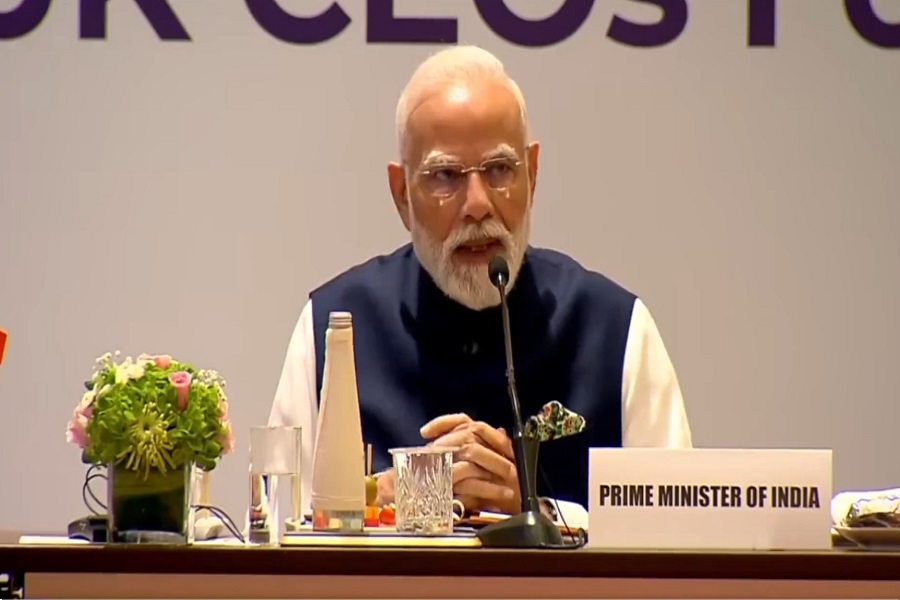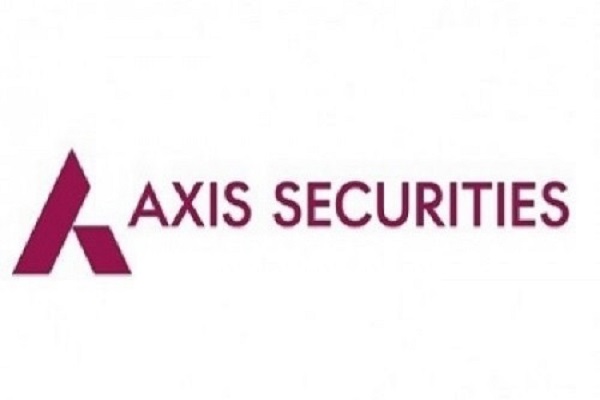Jeera trading range for the day is 19510-20010 - Kedia Advisory

Gold
Gold prices slipped by 0.2% to 96,704 per 10 grams, as traders booked profits following cooler-than-expected U.S. inflation data. May’s annual CPI came in at 2.4%, slightly lower than the forecasted 2.5%, while core inflation remained steady at 2.8%. These figures reinforced expectations that the U.S. Federal Reserve could initiate rate cuts as early as September, softening the dollar and U.S. yields — traditionally bullish for gold, though profit-booking capped gains. In parallel, U.S.-China trade tensions eased somewhat, with both nations announcing a framework to reinstate their trade truce and ease China’s rare earth export restrictions. However, broader market uncertainty persisted as a U.S. federal court allowed the continuation of sweeping tariffs, pending a final ruling. Domestically, gold demand weakened due to elevated prices. Indian dealers were compelled to widen discounts up to $56 per ounce — the highest in over a month — as record-high domestic prices dented retail interest. In contrast, premiums in China remained firm between $10–$14, reflecting stronger localized demand. Global gold demand rose 1% year-on-year to 1,206 metric tons in Q1 2025, buoyed by a 170% spike in investment inflows into ETFs and bar demand, despite a 21% drop in jewellery consumption and 21% decline in central bank purchases. Gold is under long liquidation, with open interest down 1.24% to 13,012 contracts. Key support lies at 96,325, below which prices may test 95,945. Resistance is pegged at 97,370, and a break above could trigger a move toward 98,035.
Trading Ideas:
* Gold trading range for the day is 95945-98035.
* Gold pared gains on profit booking after soft US inflation data boosted Fed rate cut expectations by September.
* US May CPI rose 2.4% YoY, below forecast and signaling easing price pressures.
* US-China reached framework to revive trade truce, pending leaders’ approval.
Silver
Silver prices declined by 1.27% to 1,05,392 per kg, as investors booked profits after the metal surged to an all-time high. Despite the correction, silver remains fundamentally supported by strong industrial demand, persistent supply constraints, and safe-haven appeal amid global economic uncertainties. The metal plays a vital role in solar power, electronics, and the broader electrification transition, which together account for more than 50% of total silver demand. The Silver Institute projects that the silver market will face a structural deficit for the fifth consecutive year in 2025, although the shortfall is expected to narrow by 21% to 117.6 million ounces. Industrial fabrication is projected to hit a record 700 million ounces in 2025, driven by a 3% increase in demand from green economy applications. Meanwhile, physical investment in silver is forecast to rise by 3%, especially in Europe and North America, as investor appetite revives at elevated price levels. On the macroeconomic front, softer-than-expected U.S. inflation data has increased the likelihood of a Federal Reserve rate cut by September. May’s CPI rose 2.4% YoY, below the 2.5% estimate, supporting precious metals due to potential dollar weakness and lower bond yields. Silver is undergoing long liquidation, with open interest down by 10.1% to 19,259. Support is at 1,04,810, below which prices may test 1,04,225. Resistance is seen at 1,06,440; a break above could take prices to 1,07,485.
Trading Ideas:
* Silver trading range for the day is 104225-107485.
* Silver prices dipped as investors booked profits after hitting an all-time high.
* Market faces fifth straight annual supply deficit, though 2025 shortfall may ease.
* Fed seen likely to cut rates in September, with odds rising for December cut.
Crude oil
Crude oil prices surged by 2.65% to settle at 5,731 per barrel, buoyed by renewed optimism in global trade after U.S. President Donald Trump confirmed a deal with China, raising hopes of easing tensions between the world’s two largest economies. The announcement bolstered risk appetite and improved demand sentiment in energy markets. On the supply front, bullish momentum was reinforced by a larger-than-expected draw in U.S. crude inventories. According to the EIA, crude stocks declined by 3.644 million barrels in the week ending June 6, surpassing market expectations of a 2.5 million-barrel drop. Inventories at the key Cushing hub also dipped by 403,000 barrels, adding to the positive tone. However, gasoline and distillate stocks rose by 1.504 million and 1.246 million barrels respectively, slightly tempering the bullish outlook. OPEC+ is expected to ramp up production by 411,000 barrels per day in July as part of its continued unwinding of earlier output cuts. Meanwhile, OPEC’s Secretary General reaffirmed long-term demand optimism, citing growing global population and energy needs as drivers of sustained consumption through 2050. Crude oil is under fresh buying, evidenced by a sharp 48.96% rise in open interest to 12,347. Support lies at 5,593, with a break below targeting 5,455. Resistance is seen at 5,810, and a breakout could push prices toward 5,889.
Trading Ideas:
* Crudeoil trading range for the day is 5455-5889.
* Crude oil rose as U.S. President Donald Trump said a deal had been done with China.
* Oil demand growth will remain robust over the next two and a half decades as the world population grows.
* U.S. President Donald Trump said that Iran has become "much more aggressive" in nuclear talks.
Natural gas
Natural gas prices edged lower by 0.7% to settle at 299.9, pressured by forecasts of weaker demand in the upcoming week. This decline occurred despite signs that Cameron LNG’s facility in Louisiana is set to ramp up intake as it exits maintenance, signaling a possible rebound in LNG-related demand. According to LSEG, U.S. gas output averaged 105.0 bcfd in June so far, slightly down from May's 105.2 bcfd and well below the March record of 106.3 bcfd, mainly due to seasonal maintenance. Meteorologists expect warmer-than-normal weather to persist through June 26, typically supportive of higher gas consumption. However, revised demand forecasts have tempered the bullish outlook, with next week's demand seen at 100.0 bcfd—lower than previously expected—despite a rise from this week’s 98.6 bcfd. Storage injections are accelerating, with U.S. utilities adding 122 bcf for the week ending May 30, surpassing market expectations of 111 bcf. The EIA remains optimistic, projecting U.S. dry gas production to reach a new high of 105.9 bcfd in 2025 and rise further to 106.4 bcfd in 2026. Domestic demand is also expected to climb, along with record LNG exports reaching 14.6 bcfd next year. Natural gas is under fresh selling pressure as open interest jumped by 9.6% to 17,612. Immediate support lies at 293.8, with further downside potential to 287.6. Resistance is seen at 308.1, with a breakout paving the way toward 316.2.
Trading Ideas:
* Naturalgas trading range for the day is 287.6-316.2.
* Natural gas eased on forecasts for less demand next week
* Cameron LNG shows signs of resuming output after recent maintenance-related reductions.
* Storage levels are 5% above average; another triple-digit injection expected.
Copper
Copper prices declined by 0.86% to close at 871.4 amid profit booking as markets assessed the outcome of the recent US–China trade discussions in London. The two economic giants reached a framework to implement the Geneva consensus, aiming to reduce trade tensions. Key aspects include China potentially lifting restrictions on rare earth exports and the U.S. easing limits on advanced technology sales—moves that could bolster long-term industrial metal demand. Despite positive geopolitical signals, copper faced pressure from weakening domestic demand in China. Data showed China’s May copper imports dropped by 2.5% from the previous month to 427,000 tons, while year-to-date imports of unwrought copper and products fell 6.7% to 2.17 million tons. Although copper concentrate imports rose 5.8% year-on-year, they fell 18% from April’s record, reflecting a rebalancing in supply-demand dynamics at Chinese smelters. On the supply side, LME inventories declined to 138,000 tons—the lowest in nearly a year—highlighting tightening global availability. This trend is compounded by ongoing disruptions at Teck Resources in Chile and the Kamoa-Kakula project in the DRC. The global refined copper market recorded a surplus of 17,000 metric tons in March, a significant drop from 180,000 tons in February, suggesting a tightening balance. Copper is under long liquidation, with open interest down by 3.17% to 6,350. Support lies at 866, with further downside toward 860.7. Resistance is seen at 879.3, and a breakout above may push prices toward 887.3.
Trading Ideas:
* Copper trading range for the day is 860.7-887.3.
* Copper dropped on profit booking as markets digested the outcome of US–China trade talks.
* Copper output from Chile's Codelco climbs 21% in April
* LME copper inventories continue to decline, with significant volumes being shipped to the US in anticipation of potential import tariffs.
Zinc
Zinc prices ended marginally higher by 0.12% at 252.65, supported by a boost in sentiment after the recent US-China trade negotiations in London led to a framework agreement aimed at easing export controls and stabilizing trade relations. This has lifted optimism across industrial metals, though zinc’s gains remain capped by persistent concerns around sluggish demand, especially from China. On the Shanghai Futures Exchange, zinc prices fell for the third consecutive session, touching their lowest level since April at 21,845 yuan per ton. Chinese buyers are limiting purchases to short-term needs amid weak downstream consumption and subdued speculative interest, as traders wait for clearer signs of recovery. Manufacturing activity in China remains soft, with the manufacturing PMI contracting for a second straight month. This has raised expectations of further stimulus measures from Beijing to revive industrial activity, which could eventually bolster zinc demand. Meanwhile, the global zinc market surplus narrowed to 23,700 metric tons in March from 75,900 tons in February, according to ILZSG data, reflecting some improvement in supply-demand balance. China’s refined zinc output in May 2025 fell 1% month-on-month but rose 2% year-on-year. However, cumulative production from January to May was up just 0.5% YoY, undershooting expectations due to widespread smelter maintenance in key producing regions. Zinc is witnessing short covering with a 4.07% decline in open interest to 2,666. Immediate support is at 251.6, with further downside seen at 250.5. Resistance is pegged at 254.4, and a breakout could lift prices toward 256.1.
Trading Ideas:
* Zinc trading range for the day is 250.5-256.1.
* Zinc gains amid renewed optimism following a framework agreement between US and Chinese officials
* China’s slowing manufacturing activity continues to dampen market sentiment.
* Stimulus hopes rise as China’s PMI contracts for the second straight month.
Aluminium
Aluminium prices edged higher by 0.71% to 242.35, buoyed by improved sentiment following the successful conclusion of US-China trade talks in London. The two nations agreed on a framework to advance the Geneva consensus, raising hopes of easing trade tensions that have clouded the metals market for years. Key elements of the deal include China potentially relaxing export restrictions on rare earths and magnetic materials, while the U.S. considers easing curbs on high-tech exports. Although the agreement awaits final presidential approval, the prospect of reduced trade friction is encouraging for industrial demand prospects, particularly for aluminium. Geopolitical tensions had earlier dented aluminium flows, with U.S. imports of primary aluminium in April dropping 20% year-on-year to around 281,500 tons, following the 25% tariff imposed in March. However, macroeconomic headwinds persist. China’s export and import growth in May underwhelmed, reflecting continued weakness in external and domestic demand. On the inflation front, China saw consumer prices decline for a fourth consecutive month, while producer price deflation deepened, reinforcing disinflationary concerns. Despite this, China's aluminium production rose 4.2% year-on-year in April to 3.75 million tons, and total output for the first four months of the year climbed 3.4% to 14.79 million tons. Aluminium is experiencing short covering, as open interest fell by 2.43% to 3,970. Immediate support is at 241.5, with a further downside target of 240.6. Resistance is seen at 243.3, and a breakout could push prices toward 244.2.
Trading Ideas:
* Aluminium trading range for the day is 240.6-244.2.
* Aluminium climbed as investors welcomed the positive outcome of a two-day round of US-China trade talks.
* US primary aluminium imports fall by 20% in Apr due to tariffs
* China’s export growth in May missed expectations, mainly due to a sharp drop in shipments.
Turmeric
Turmeric prices rose by 0.73% to settle at 14,866, supported by ongoing concerns over lower crop yields and steady demand for superior-quality new arrivals. Despite the rise, the upside was capped by a sharp increase in arrivals, which surged to approximately 57,500 quintals from 29,860 quintals in the previous session. Although the acreage under turmeric has expanded by 10% to 3.30 lakh hectares this season, production gains remain uncertain due to untimely rains that may impact yield. Notably, the Nanded region is facing challenges like small rhizomes and crop rots, suggesting a potential 10–15% decline in yields compared to last year’s output of 10.75 lakh tonnes. Fresh arrivals at markets like Duggirala are witnessing firm demand, with new stocks commanding a premium over old inventory due to better quality. Around 50–55% of the new crop has already been traded, and market activity remains strong, with 1,000–1,200 bags (70 kg each) arriving daily. The ongoing harvest, likely to continue through June, is expected to maintain this momentum. On the export front, turmeric shipments during April–March 2025 rose 8.83% to 1.76 lakh tonnes compared to the previous year. March 2025 exports stood at 15,095.79 tonnes, reflecting a 20.39% increase over February 2025, though down 13.41% year-on-year. Turmeric futures witnessed fresh buying interest as open interest surged by 6.4% to 12,145 contracts. Immediate support is at 14,704, and a break below could test 14,542. On the upside, resistance is seen at 15,024, with a breakout potentially pushing prices to 15,182.
Trading Ideas:
* Turmeric trading range for the day is 14542-15182.
* Turmeric gained amid persistent concerns about arrivals and lower production estimates.
* However upside seen limited due to increased arrivals and owing to weak export enquiries.
* Turmeric exports during Apr - Mar 2025, jump by 8.83 percent at 176325.34 tonnes compared to Apr - Mar 2024.
* In Nizamabad, a major spot market, the price ended at 14518.4 Rupees dropped by -0.22 percent.
Jeera
Jeera futures closed marginally lower by 0.08% at 19,810, weighed down by weak domestic and export demand. The decline is largely attributed to the end of the retail buying season and subdued interest from international buyers. Additionally, increased supplies are adding pressure to prices, with total mandi arrivals rising to 32,900 bags, up from 28,000 in the previous session. The availability of adequate stock continues to dampen sentiment, with traders estimating farmers still hold nearly 20 lakh bags. Of these, only about 3–4 lakh bags are expected to be traded before the season ends, potentially resulting in a carry-forward stock of approximately 16 lakh bags. The delay in the new crop's arrival—by nearly a month due to unfavorable weather in key producing states like Gujarat and Rajasthan—has yet to significantly alter the demand-supply equation, as current needs are being met through existing inventories. Despite the short-term weakness, export data paints a stronger picture: Jeera exports during April–March 2025 surged by 39.63% to 2.12 lakh tonnes compared to 1.52 lakh tonnes the previous year. March 2025 saw a 33.40% month-on-month export jump to 17,337.91 tonnes, though this was down 46.03% year-on-year. On the import front, volumes dropped drastically—down 93.20% year-on-year—highlighting India's reduced dependence on overseas supply. Jeera futures experienced fresh selling as open interest rose 5.51% to 4,998. The immediate support is at 19,660, with a further downside possibly testing 19,510. Resistance is seen at 19,910, and a breakout could push prices towards 20,010.
Trading Ideas:
* Jeera trading range for the day is 19510-20010.
* Jeera dropped due to low buying from domestic buyers and subdued export demand.
* The current season is expected to have similar production levels as last year due to better crop conditions.
* Jeera exports during Apr - Mar 2025, rose by 39.63 percent at 212502.49 tonnes compared Apr - Mar 2024.
* In Unjha, a major spot market, the price ended at 20270.6 Rupees dropped by -0.7 percent.
Views express by all participants are for information & academic purpose only. Kindly read disclaimer before referring below views
